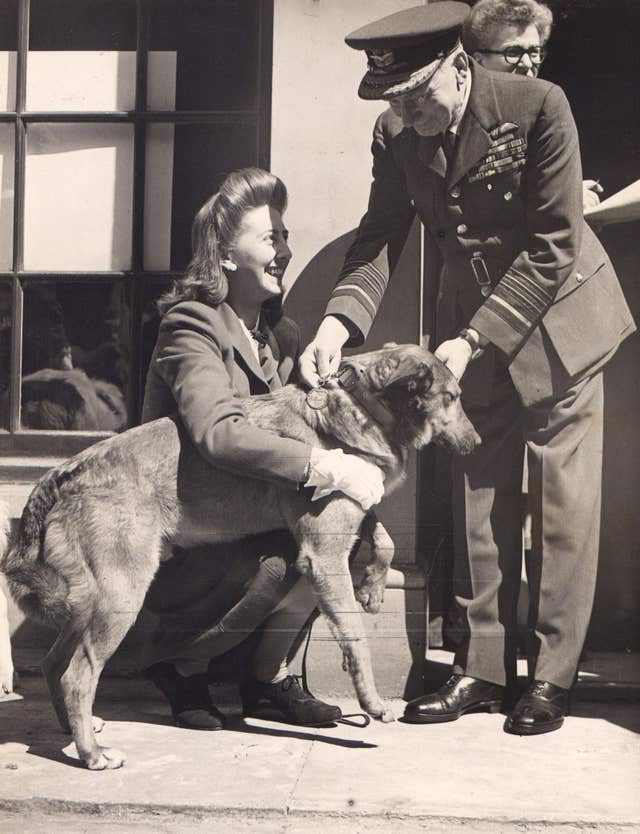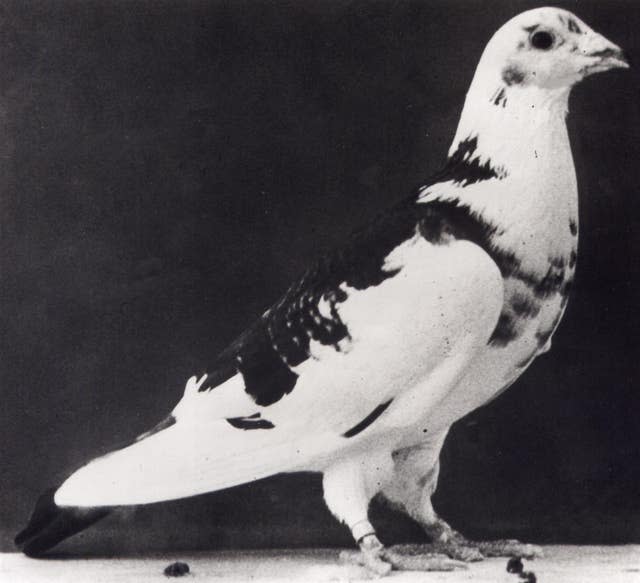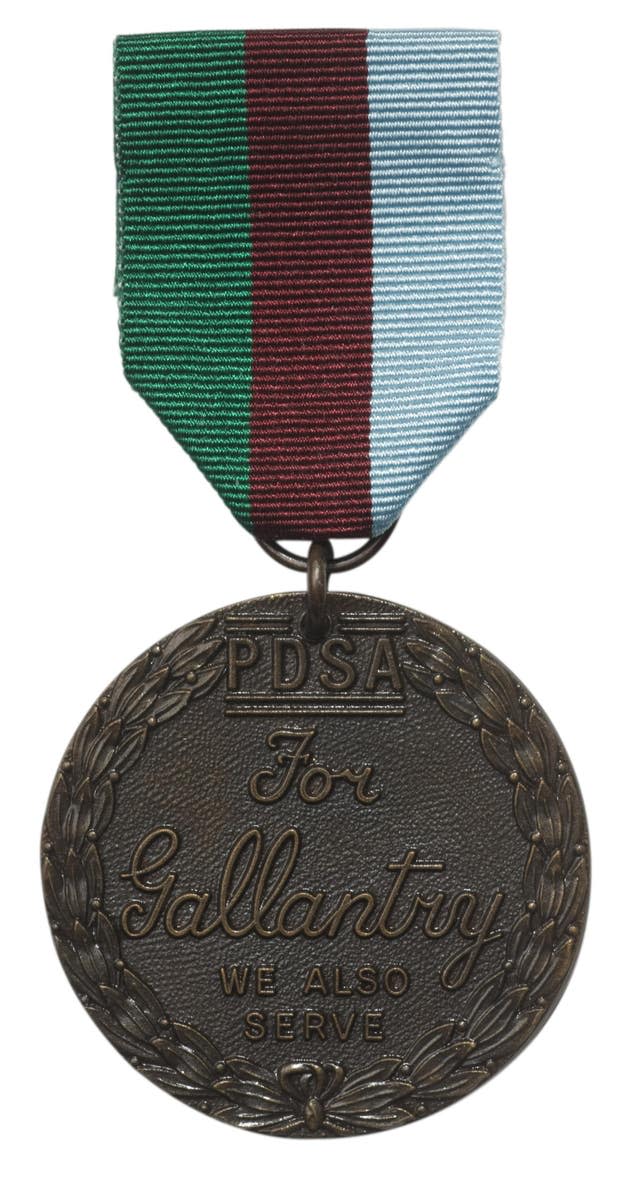Pigeons and parachuting dog decorated as D-Day heroes
Pigeons and a parachuting dog were among those to perform acts of valour while deployed to the frontline during D-Day.
Their heroics have been immortalised through the PDSA Dickin Medal, the animal equivalent of the Victoria Cross.
The Dickin Medal, named after the veterinary charity’s founder, has been awarded 75 times since it was founded in 1943.
Recipients comprise 38 dogs, 32 pigeons, four horses and one cat.
Brian was awarded the #PDSADickinMedal in 1947 🎖️
While parachuting into France, Brian faced severe gunfire & suffered injuries from getting caught in a tree. However, he courageously continued to go about his duty & help save lives ❤️
Congratulate this D-Day animal hero 👏 pic.twitter.com/08gOCpFAPT
— PDSA (@PDSA_HQ) March 29, 2021
Jan McLoughlin, the director general of the PDSA, expressed hope that on the 80th anniversary of D-Day, tales of gallantry would garner attention for the work of animals in conflict.
“Recipients of these medals hailed from the most dangerous war zones and D-Day was certainly one of them,” she told the PA news agency.
“Hopefully these stories will shine a light on the role animals play in war.”
During the Second World War, thousands of pigeon fanciers handed over their birds to serve as messengers, relaying orders and delivering news.
The pigeons were harnessed by troops to deliver intelligence where radio equipment could be unreliable, particularly during intense fighting.
#Onthisday 1944, RAF pigeon Gustav received PDSA Dickin Medal for bringing the first news of D-Day back to Britain. pic.twitter.com/ZFEWZ4kzIA
— PDSA (@PDSA_HQ) September 1, 2016
Coded messages were attached to the pigeon’s leg as they flew through gunfire and dodged birds of prey.
Days before D-Day, the 21st Army Group parachuted behind enemy lines in Merville with a mission to disable four heavy-calibre guns trained on Sword Beach.
Accompanying the paratroopers was the Duke of Normandy, a messenger pigeon whose role it was to relay news of the operation’s success.
“His journey home took almost 27 hours through bullets and bombs,” Ms McLoughlin said, adding: “He delivered critical intelligence to Allied Command that saved many lives.”
The Duke was awarded the Dickin Medal on January 8 1947, with the citation: “For being the first bird to arrive with a message from paratroopers of 21st Army Group behind enemy lines on D-Day.”

RAF homing pigeon Gustav, released by Reuters news agency correspondent Montague Taylor, relayed the first news report of the D-Day landings.
“He was one of six carrier pigeons given to Reuters by the RAF to cover the D-Day landings,” Ms McLoughlin said.
Gustav flew 150 miles across the Channel in five hours and 16 minutes with his message.
He received the Dickin Medal on September 1 1944 with the citation: “For delivering the first message from the Normandy Beaches from a ship off the beachhead while serving with the RAF on June 6, 1944.”

Another Dickin Medal recipient for actions during D-Day was a parachuting Alsatian called Brian, known as Bing to his family.
Brian joined the Army War Dog Training School after the Fetch family from Loughborough could no longer sustain him with their rations.
After his training, he was posted to the 13th Lancashire Parachute Battalion and completed a two-week training course with the scout and sniper unit.
During his career, he completed seven parachute jumps but his last would be as part of Operation Varsity during D-Day.

The largest airborne operation ever conducted in one location on a single day, 16,000 paratroopers dropped with a mission to establish a bridgehead across the river Rhine for the Allied advance.
“Brian’s jump didn’t quite go to plan. He had to be cut down from a tree”, Ms Mcloughlin said of Brian’s descent into Ranville, but fellow paratrooper Sgt Ken Bailey saved his life and the pair fought together over the next few months.
Brian remained on active duty in occupied Germany after the war but was eventually reunited with his family and would live until 1955.
He was presented with his Dickin Medal on March 29 1947, with the citation: “For excellent patrol work and qualifying as a paratrooper, Airborne Division, Normandy, June 1944.”
He is buried alongside fellow Dickin Medal recipients at the PDSA animal cemetery in Ilford, Essex.
The medal was founded in 1943 by Maria Dickin, a social reformer who set up the PDSA in 1917.
Amy Dickin, of the PDSA, previously said: “It is such a unique piece of social history.
“Maria Dickin was working in Blitz London seeing the role that animals were playing in the military effort both at home and abroad.
“She went to the War Office and the Imperial War Museum and asked both institutions for her blessing, which they gave.”
Made of bronze, the medal reads “For Gallantry” and “We Also Serve”, and is adorned by a green, dark brown and sky-blue striped ribbon, representing the water, earth and air of the naval, land and air forces.

 Yahoo News
Yahoo News 
